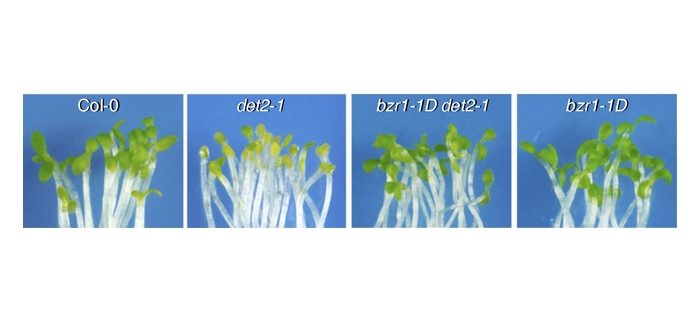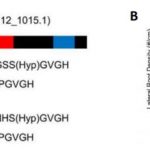Brassinosteroids Promote Greening of Etiolated Seedlings
Wang et al. demonstrate that BRs play important roles in seedling development and survival during the initial emergence of seedlings from subterranean darkness into sunlight. The Plant Cell (2020) https://doi.org/10.1105/tpc.20.00057.
By Lingyan Wang,Yanchen Tian, Wen Shi, Min Fan and Ming-Yi Bai, The Key Laboratory of Plant Development and Environmental Adaptation Biology, Ministry of Education, School of Life Science, Shandong University, 266237, Qingdao, China
Background: After germination under soil, seedlings develop elongated hypocotyls, closed apical hooks and yellow cotyledons, a process termed skotomorphogenesis. Once seedlings break through the soil and reach the light, seedlings switch to light-mediated photomorphogenic development, characterized by unfolding and greening of the cotyledons. The switch from dark- to light-mediated development is critical for the survival and growth of seedlings, but the underlying regulatory mechanisms are fragmentary. Brassinosteroids (BRs) are a group of plant steroid phytohormones that regulate a large fraction of plant growth and developmental processes and have been reported to play key roles in seedling skotomorphogenesis. However, whether BRs regulate the developmental switch from skotomorphogenesis to photomorphogenesis remains unclear.
Question: Do BRs play critical roles for seedlings development during the initial emergence of seedlings from subterranean darkness into sunlight? We tested this by examining the cotyledon-greening phenotypes of various BR-related mutants grown in the dark for 4-8 days before exposure to white light for 2 days.
Findings: We found that the greening rates of the BR-deficient mutant det2-1 were much lower than those of wild-type seedlings after 4 days or more in the dark, and these reduced greening rates were suppressed by exogenous BR treatment or by the dominant gain-of-function mutant bzr1-1D. Genetic analysis indicated that PIFs were required for BZR1-mediated seedling greening. BZR1 and PIFs cooperatively induce the expression of the transcription factors GRF7 and GRF8. Suppression of GRFs function by overexpressing microRNA396a caused an accumulation of photochlorophyllide in the dark and severe photo-bleaching upon light exposure. BZR1, PIF4 and GRF7 interacted with each other to precisely regulate the expression of chlorophyll biosynthetic genes and promote seedling greening.
Next steps: Based on these findings, we will examine how BRs optimize the biosynthesis of chlorophyll to prevent photo-oxidative damage and improve photosynthesis. The knowledge will provide crop scientists with a theoretical basis for using BRs to increase the survival of crop seedlings during the initial emergence of seedlings from subterranean darkness into sunlight.
Lingyan Wang et al. (2020). The miR396-GRFs Module Mediates the Prevention of Photo-oxidative Damage by Brassinosteroids during Seedling De-Etiolation in Arabidopsis. Plant Cell. DOI: https://doi.org/10.1105/tpc.20.00057




